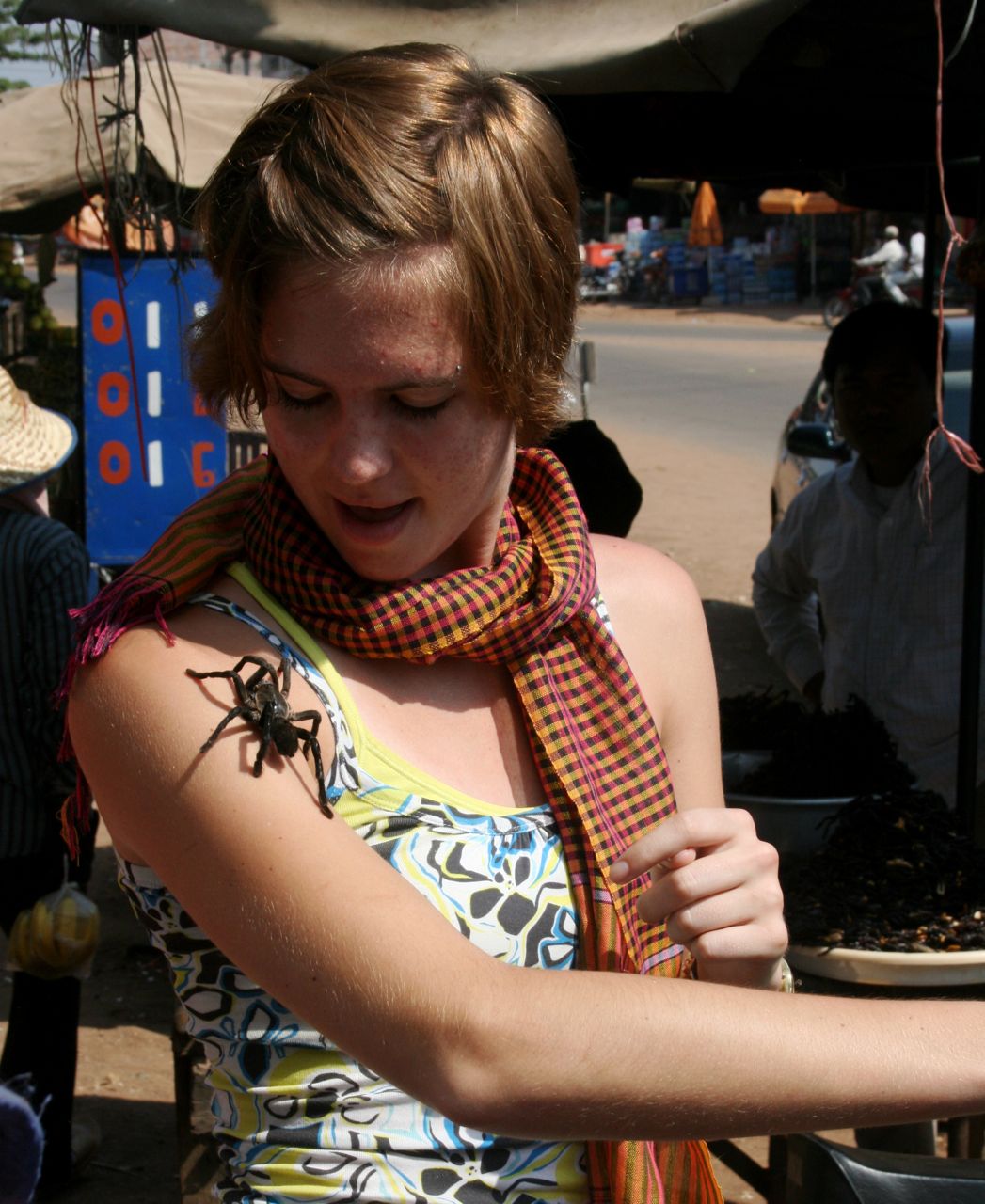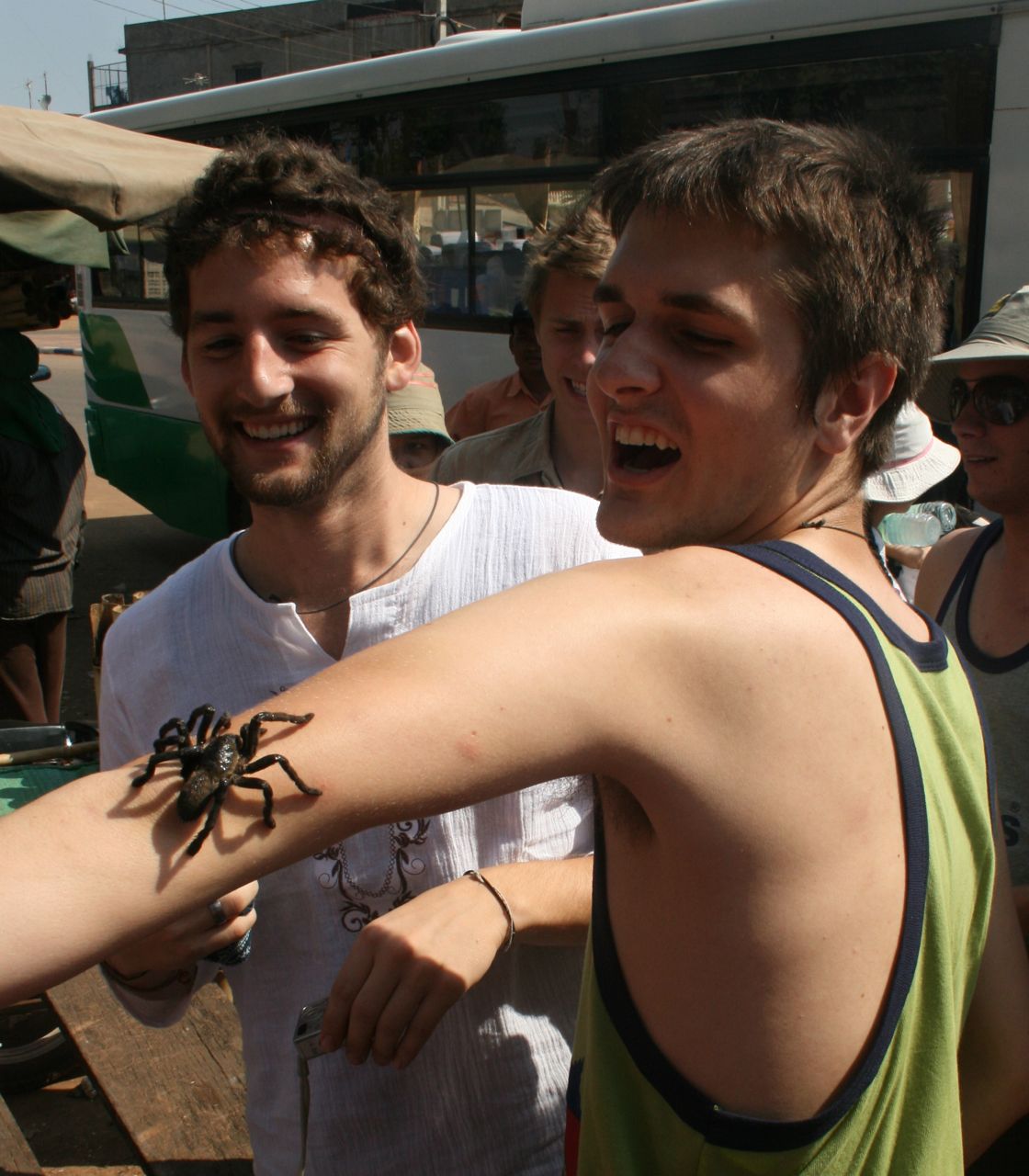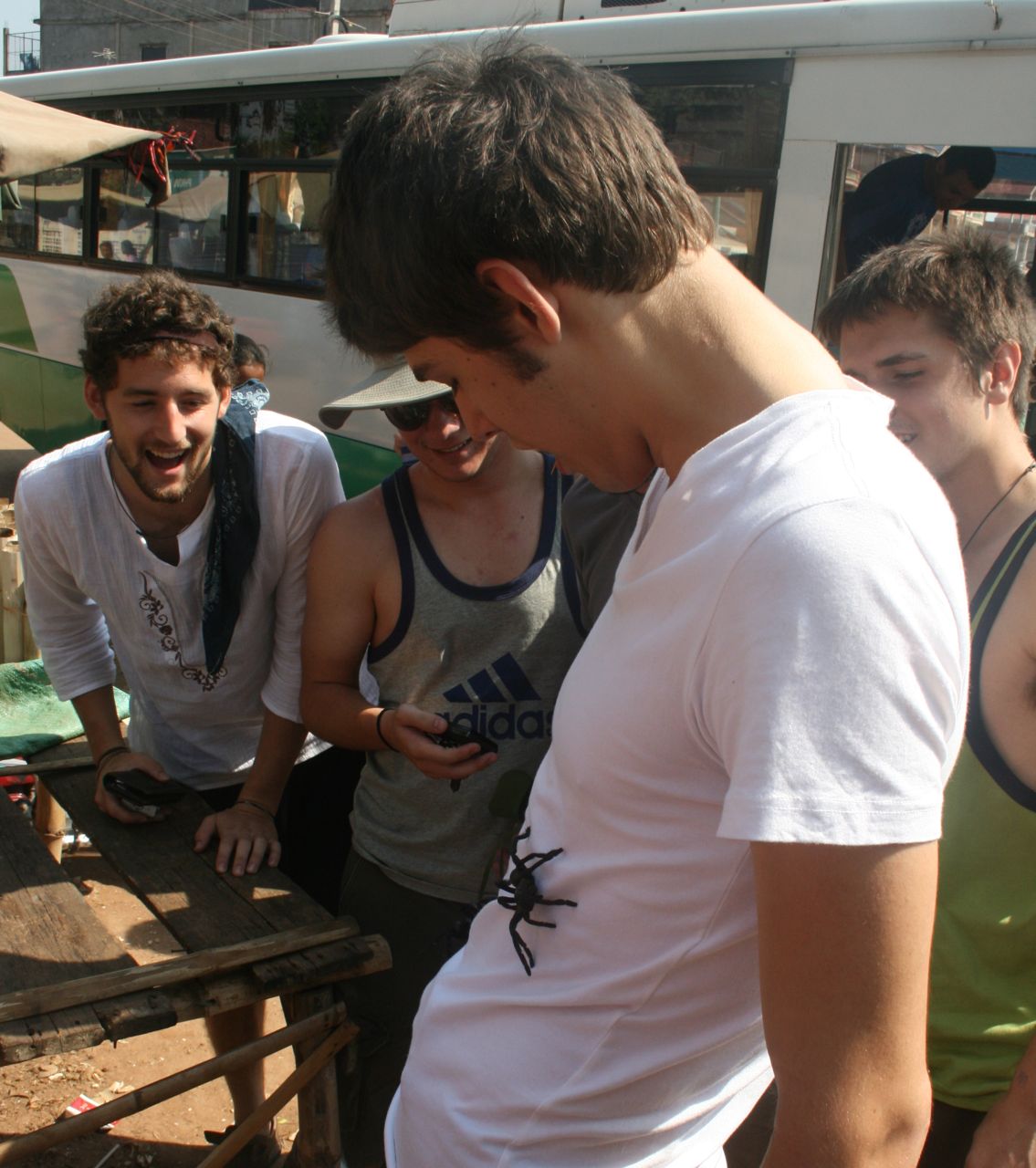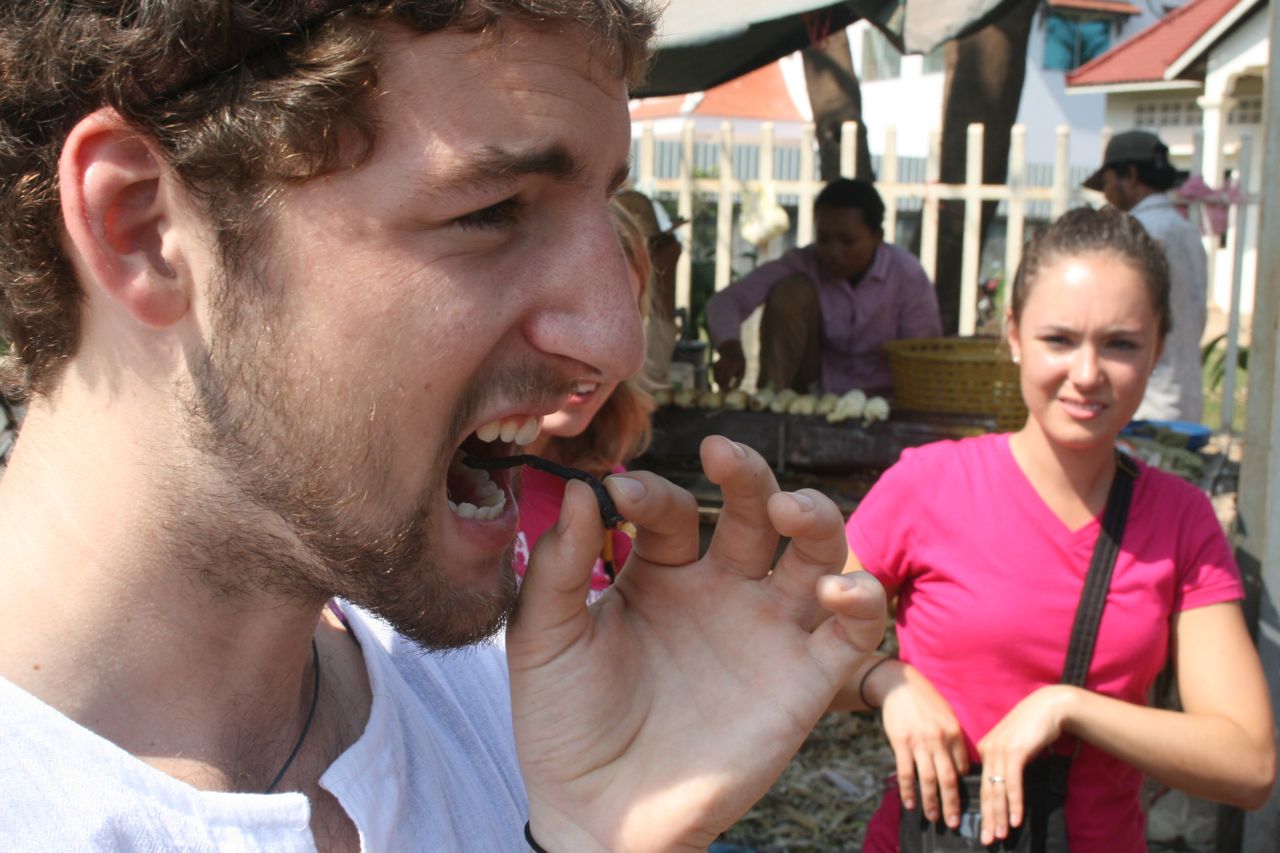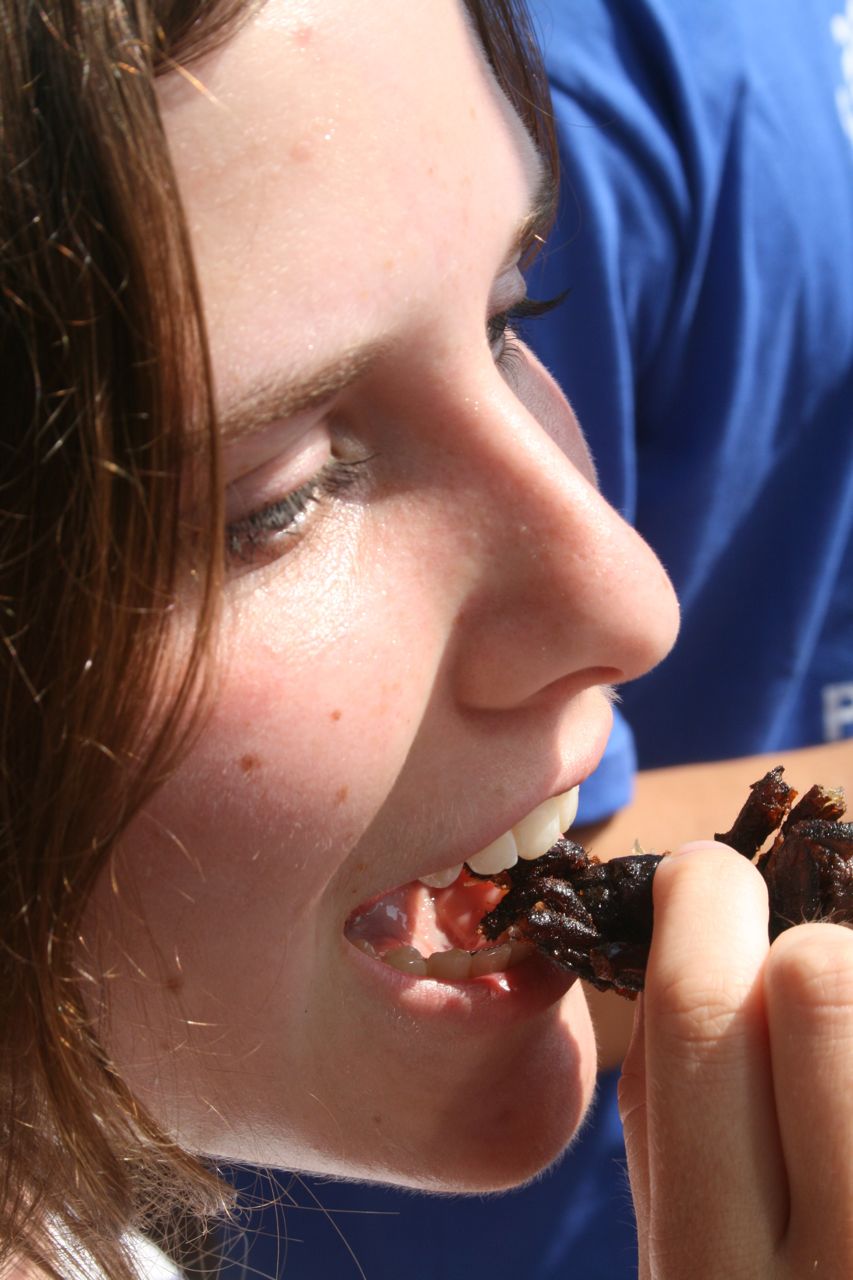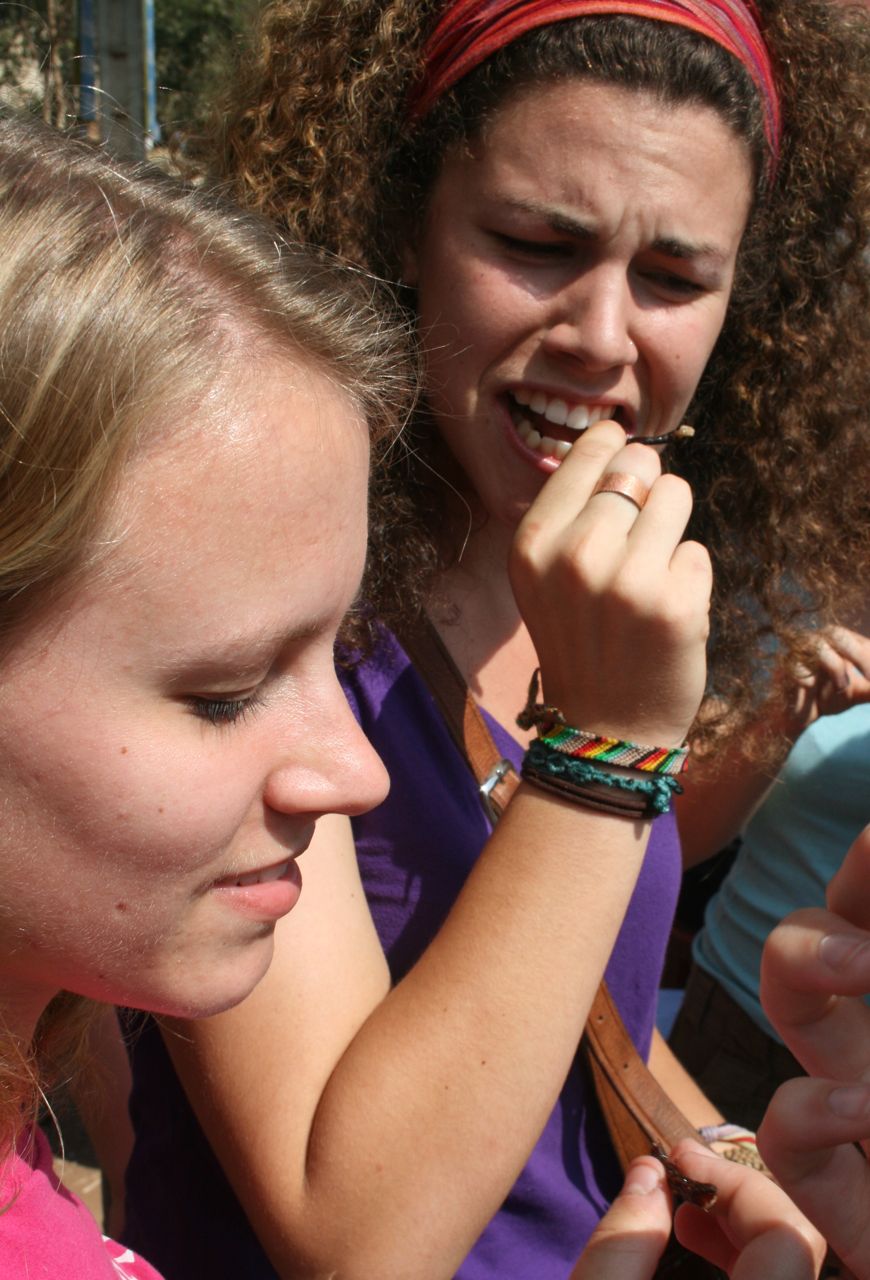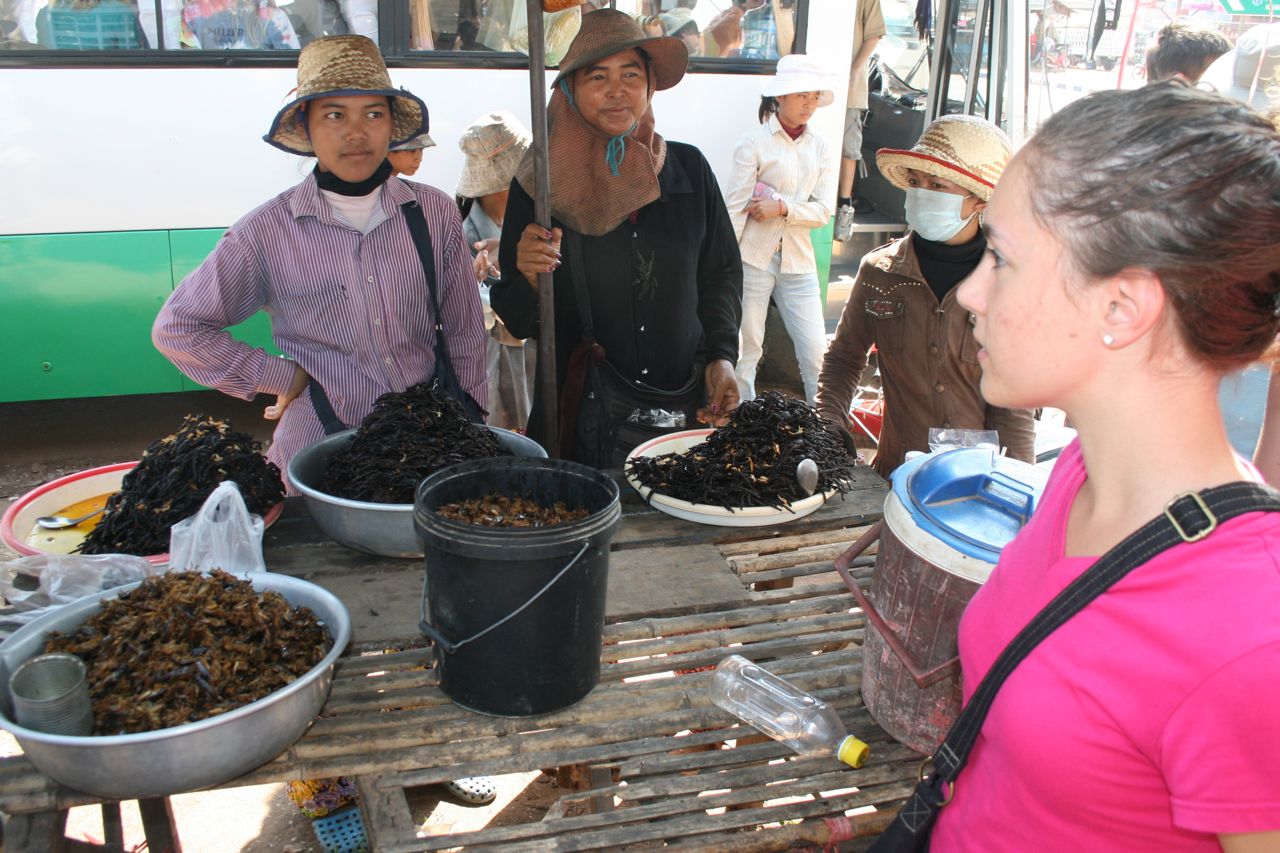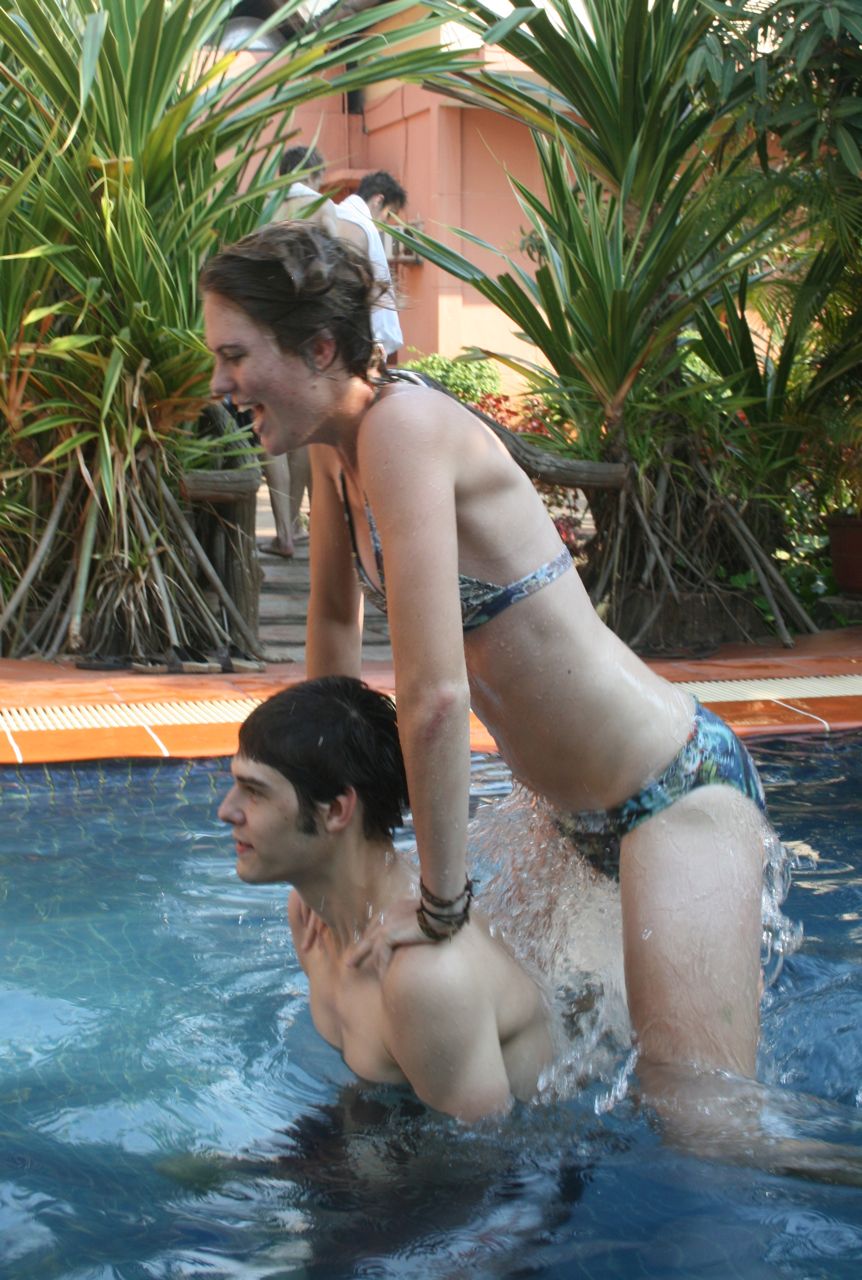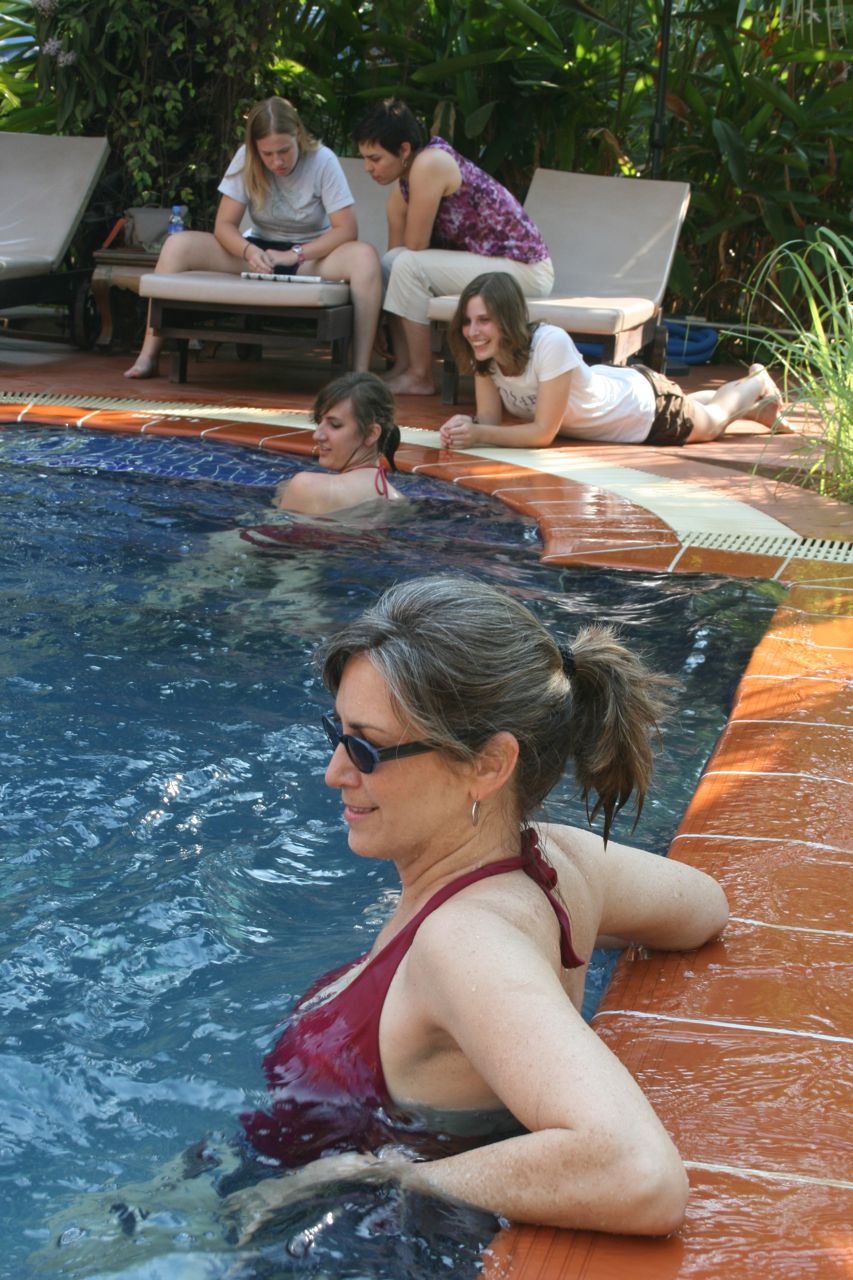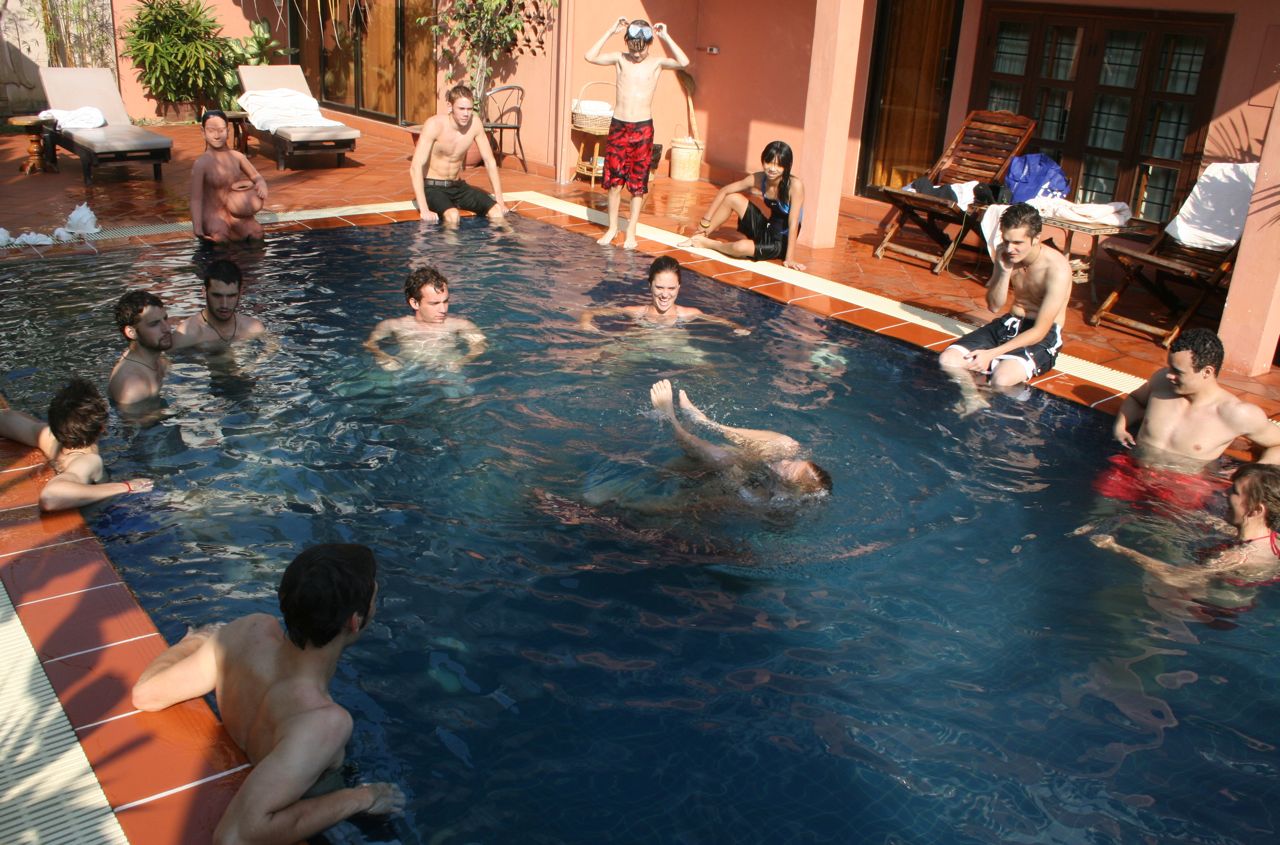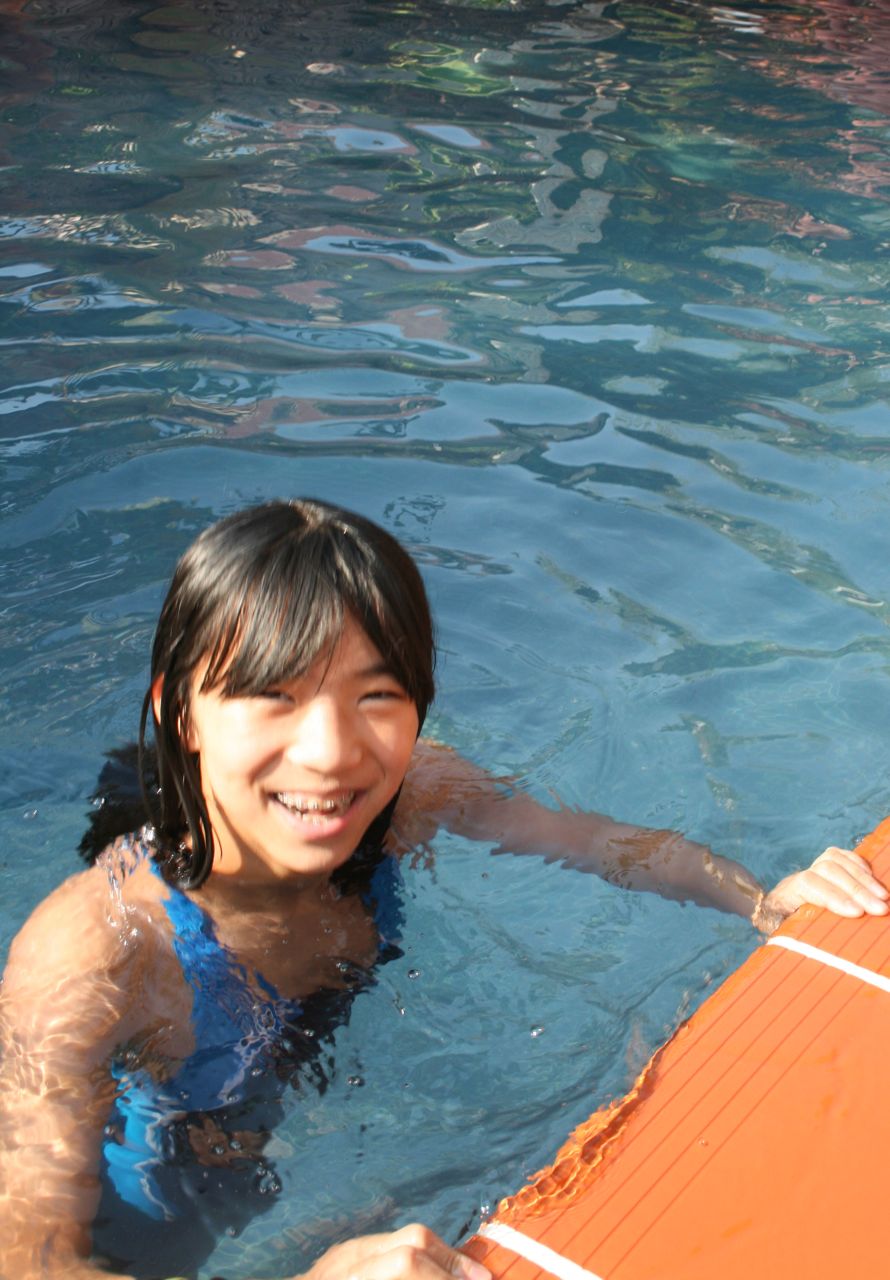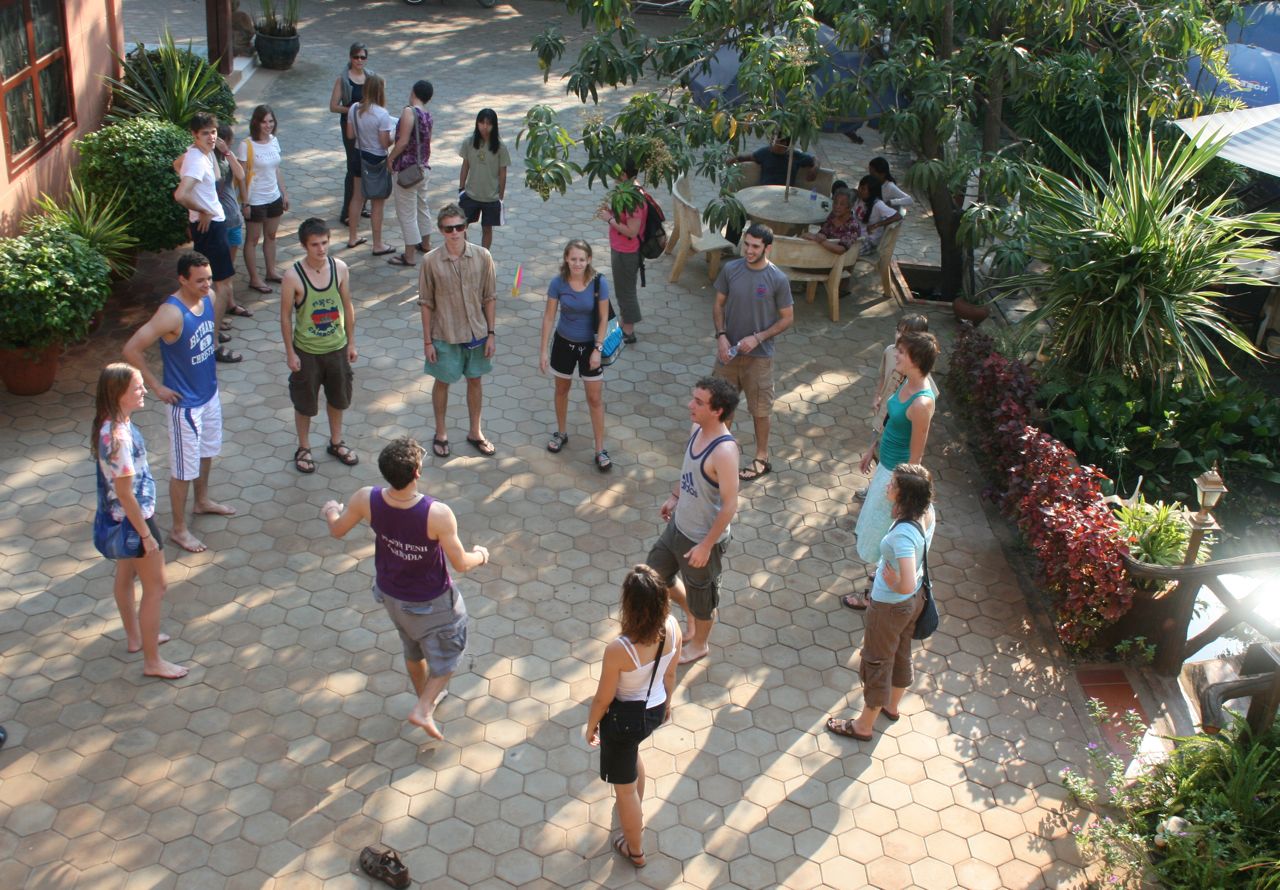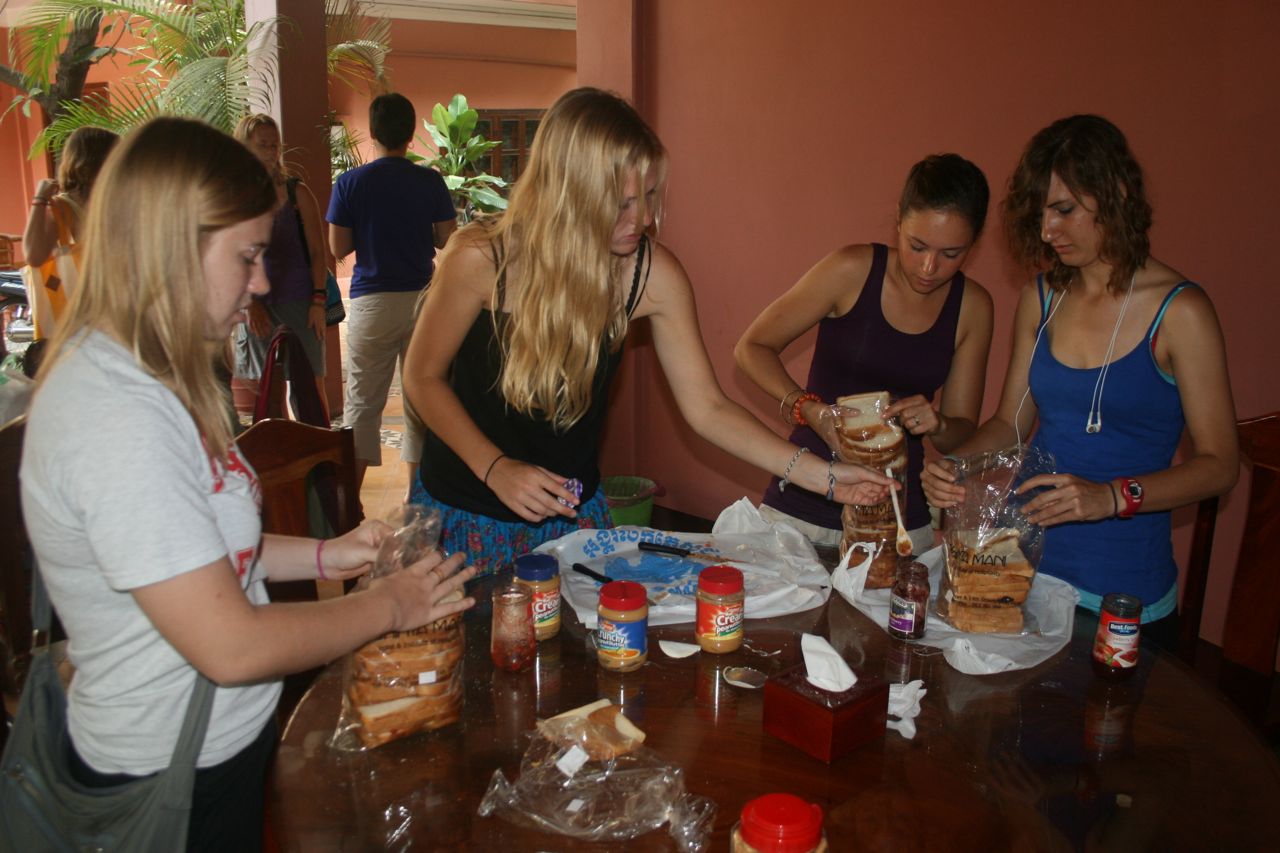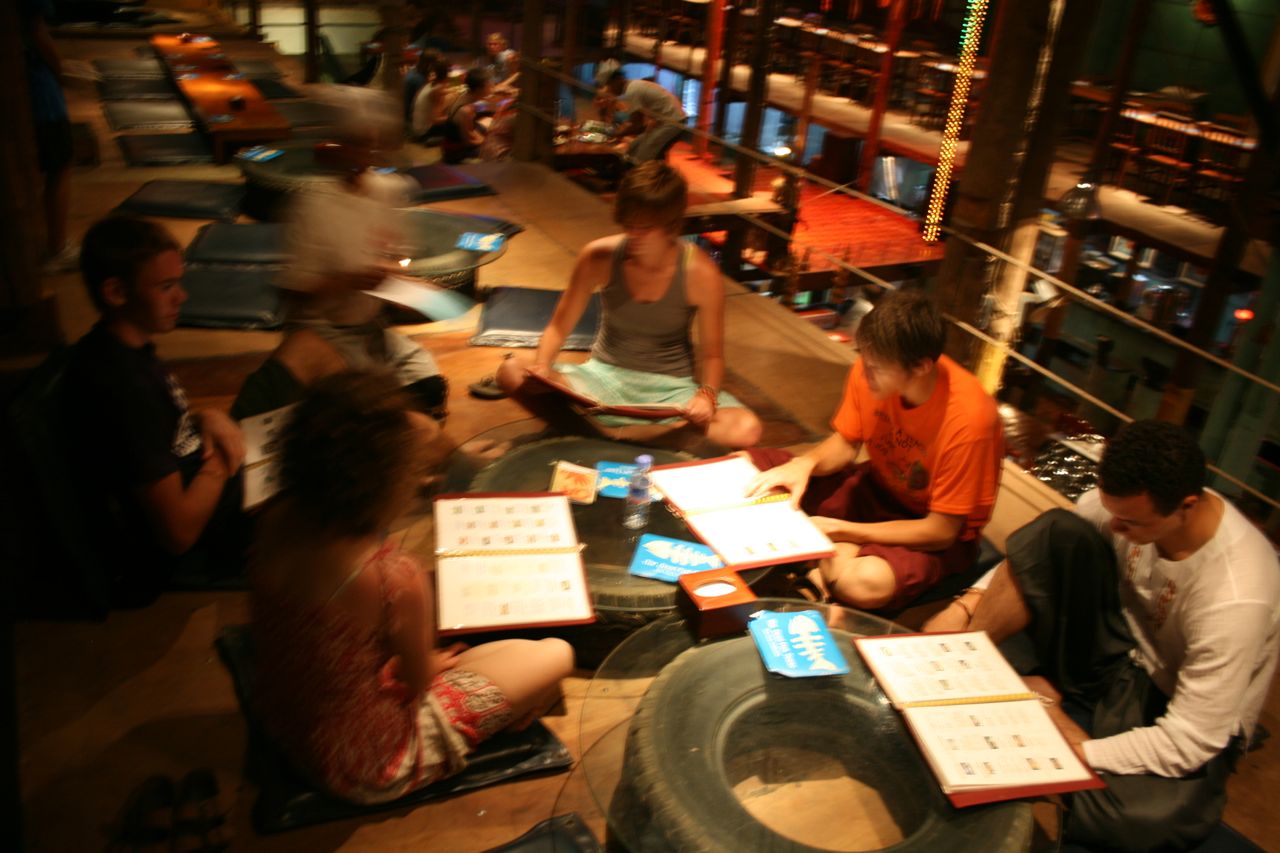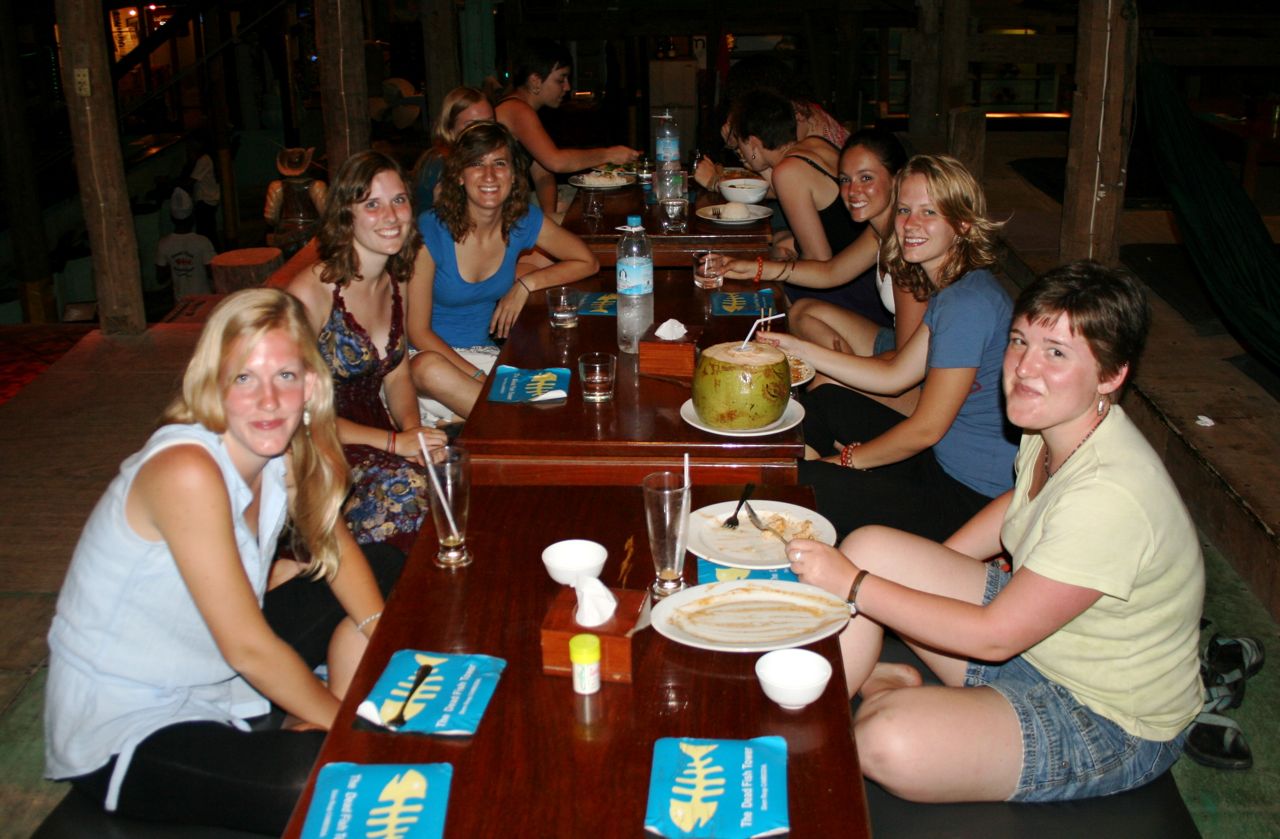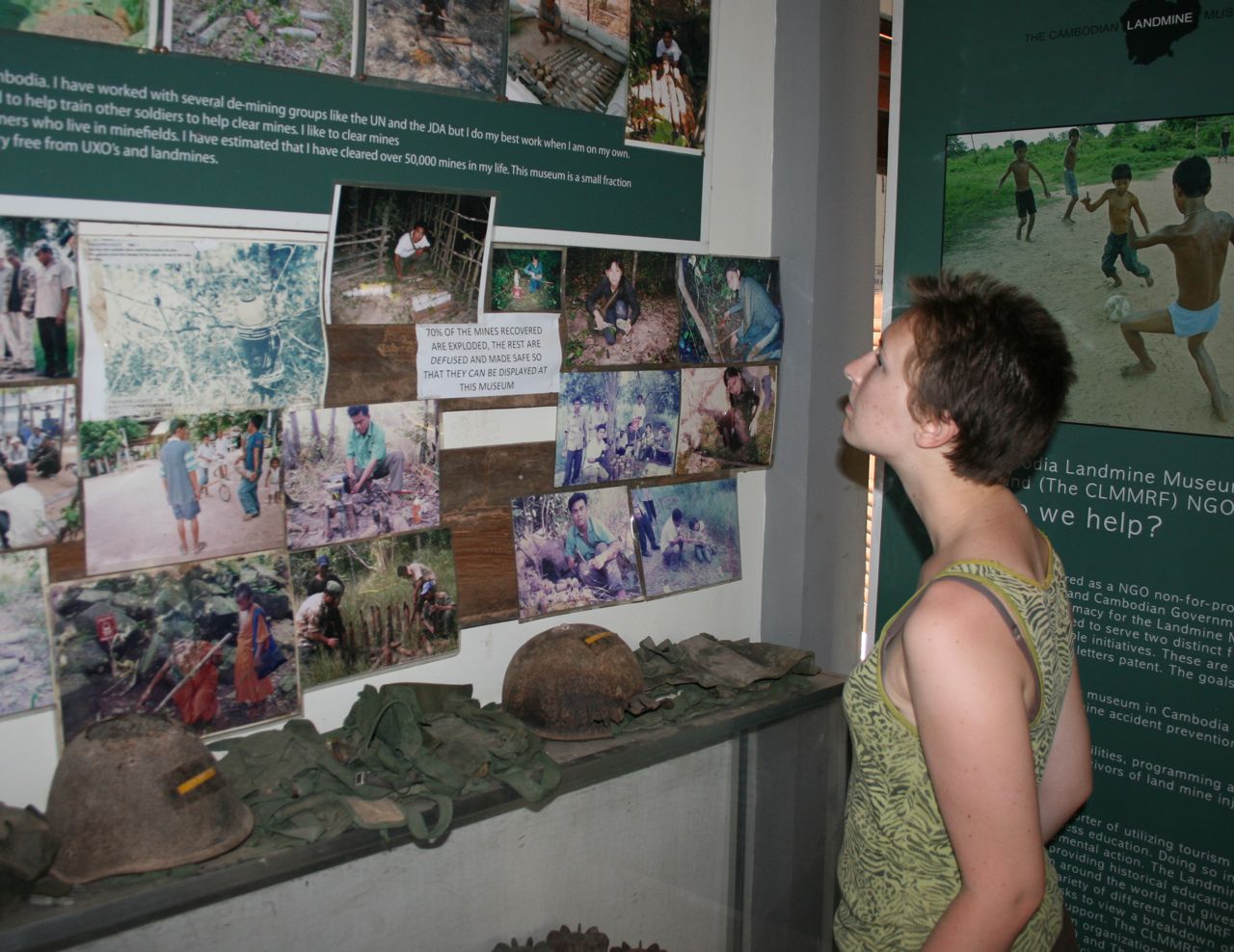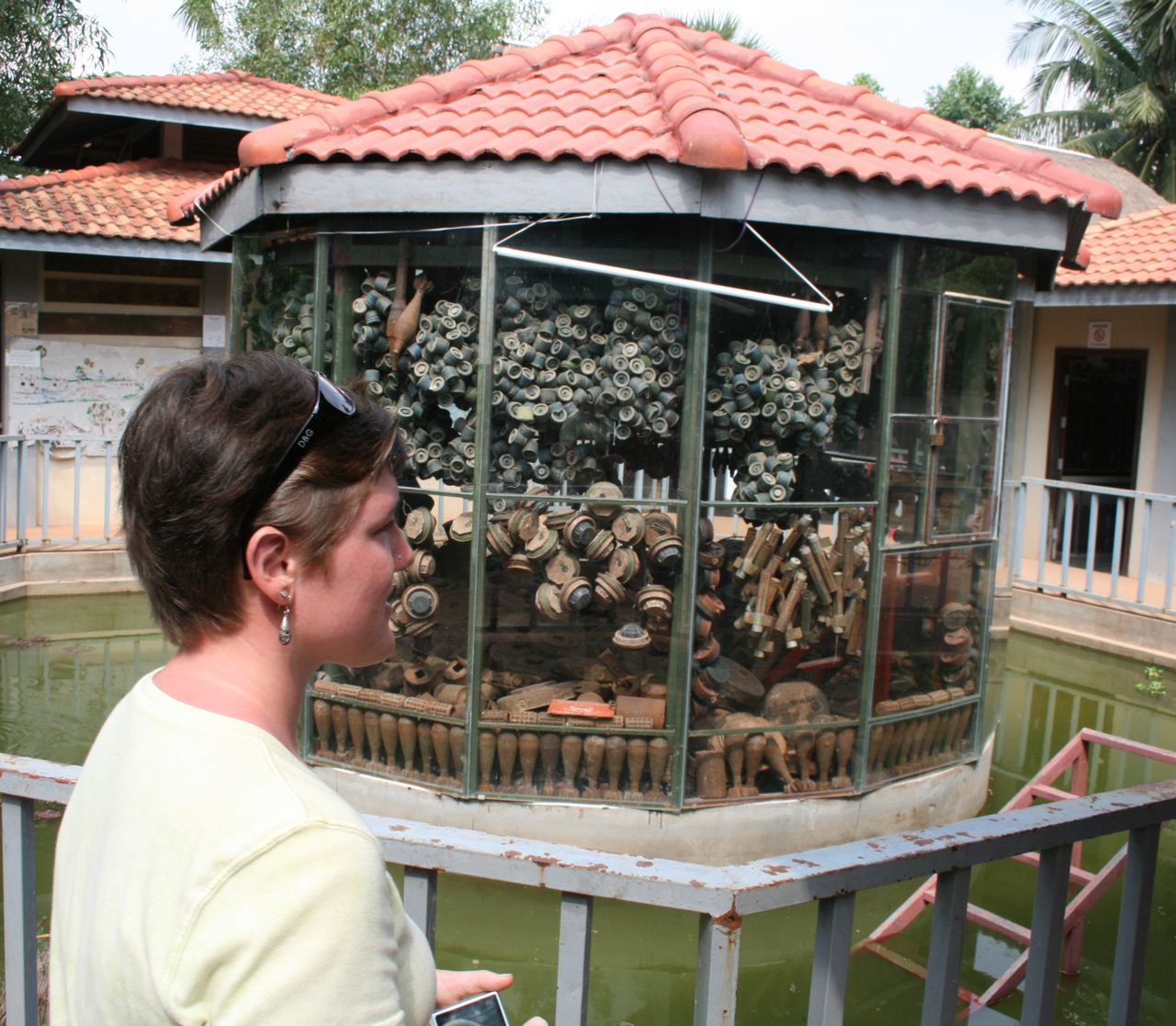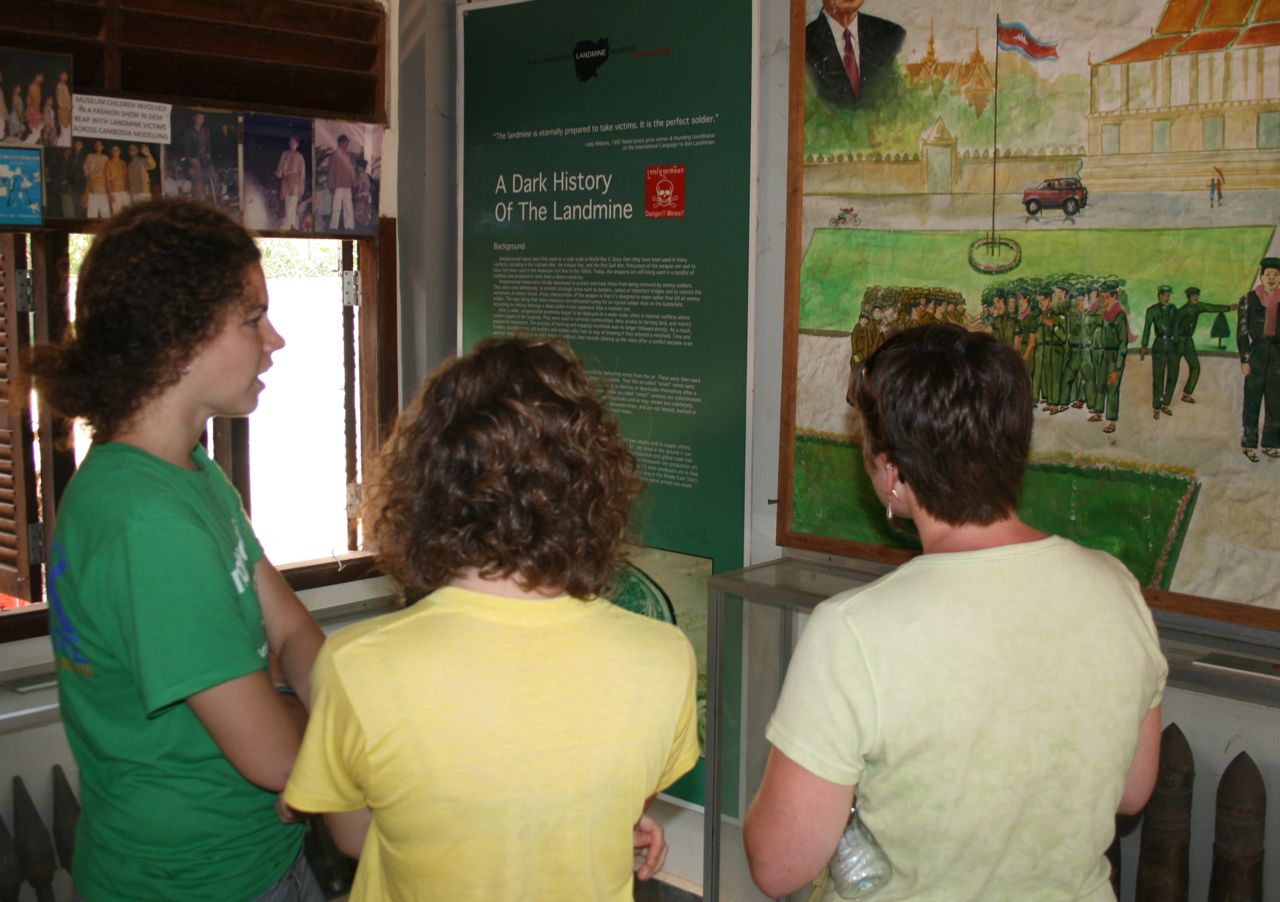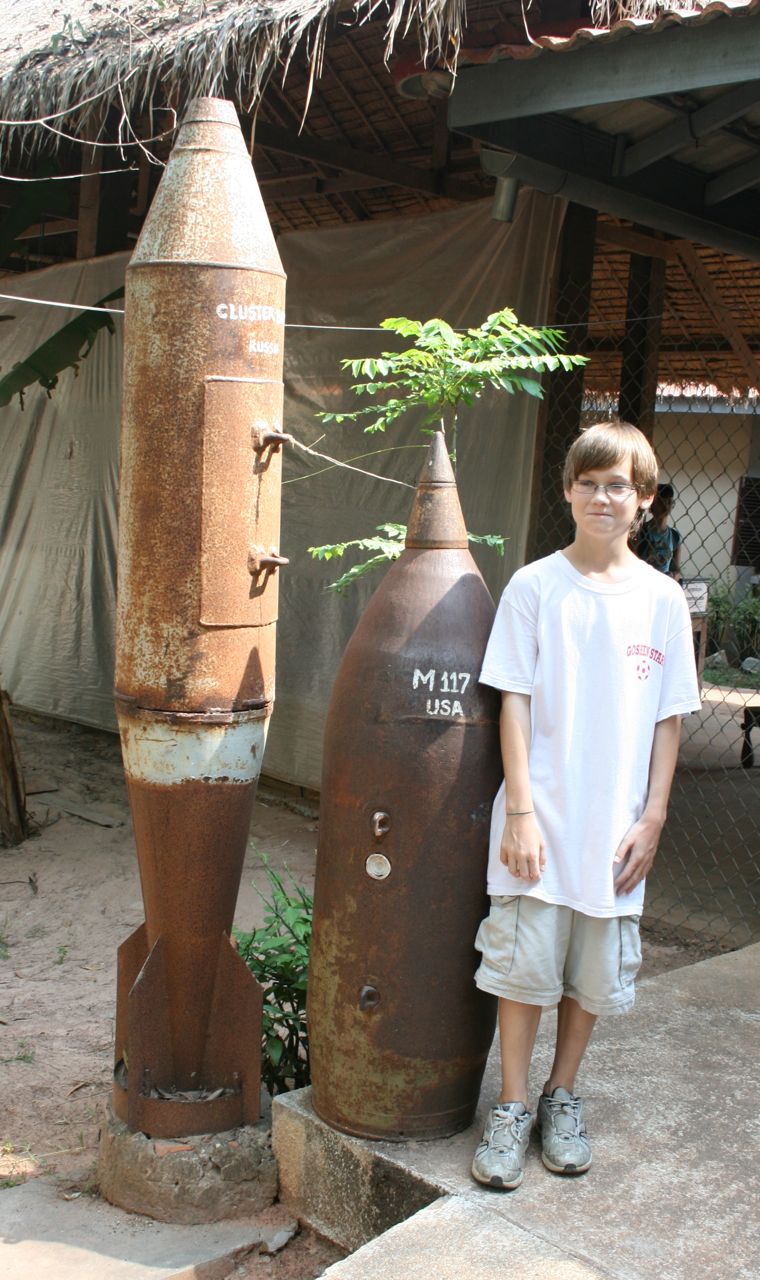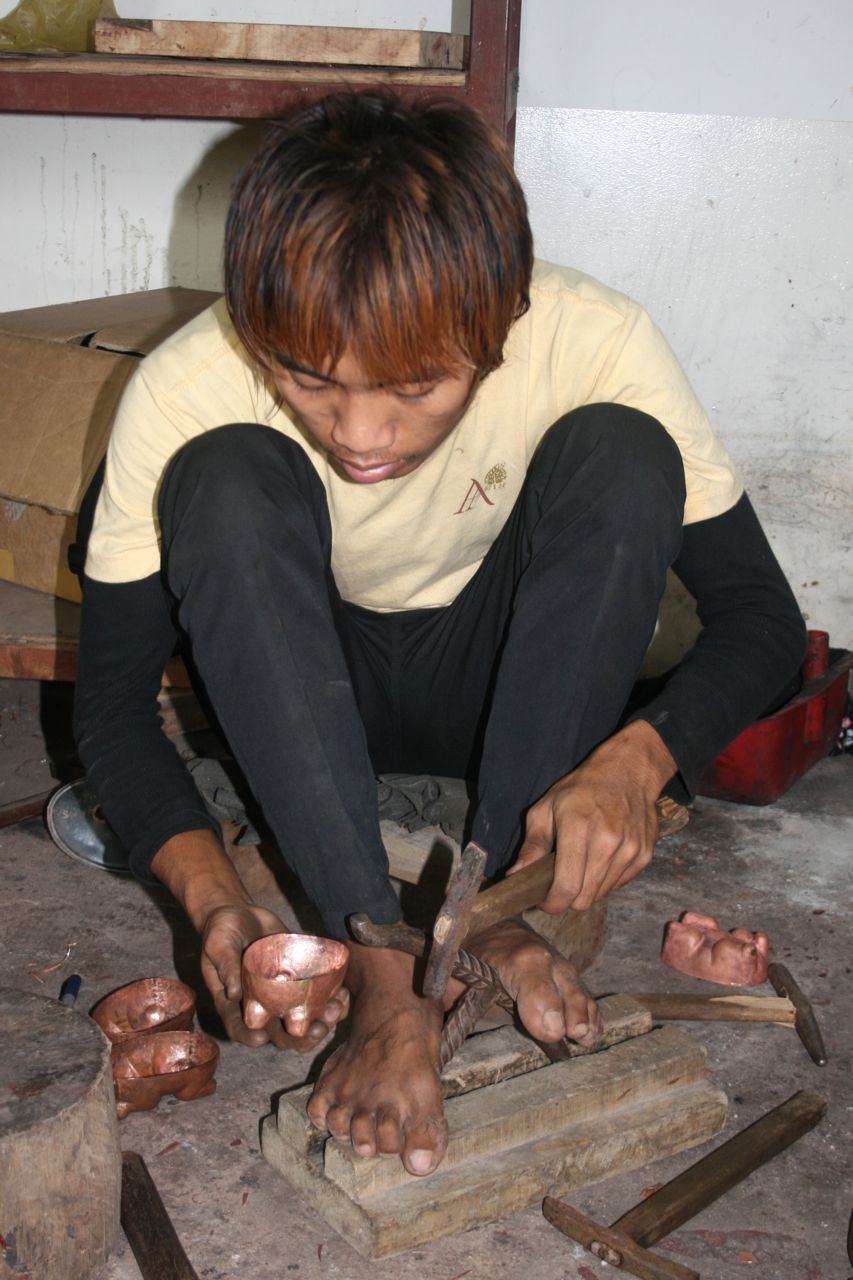Skuon and Siem Reap
Given the zestiness of the Siem Reap field trip, we’ll post three different blogs about that experience. This first blog includes photos of Skuon, the spider village where we stopped on the way to Siem Reap; images from lounging at the hotel pool and dining at the Dead Fish Tower; and photos from the Landmine Museum, which part of the group visited on Sunday morning. Subsequent blogs will focus on the temples at Angkor Wat and on our day trip to the stilt-village of Kampong Phluck.Our stop in Skuon was a highlight of the 6 1/2-hour drive to Siem Reap. Skuon villagers are known for their level of consumption of deep-fried spiders, which apparently is greater than that of ordinary Cambodians. Legend has it that Skuon people began eating spiders in greater volumes during the Khmer Rouge period, when food sources were extremely scarce. Now they cultivate them for local people to eat for breakfast, lunch, or dinner, and for tourists who stop along the way.
As shown here, many in the group allowed the live, Tarantula-like spiders to crawl on their bodies before tasting some of their fried siblings. Deep-fried spiders taste a little like burnt french-fries or about any other similar fried food. A few tasted not only the legs but also the squishy bodies, which take a stronger stomach to consume. One group of women students also bought a canful of crickets and downed those before we headed off to Siem Reap. The fried crickets had mixed reviews, but were a little crunchy and bitter for some foodies.
In Siem Reap, we stayed at the Green Garden Home Hotel, which has a lovely pool and is near the center of Siem Reap, within walking distance of most markets and restaurants. Students thoroughly enjoyed afternoon and evening swims, as well as dining in a wide array of restaurants at night. Nearly everyone had Mexican food on one night or the other (tough to get in Cambodia), and most people spent part of an evening at the Dead Fish Tower, which has multiple levels accessed by steps and ladders and features apsara dancing every hour. Many students regularly played sei (the Cambodian form of hackysack, as noted on the earlier entry) in the hotel’s public space.
On Sunday morning 13 of us went on an optional field trip to the Landmine Museum, a project of Cambodian Aki Ra, who is now supported by an NGO. The museum houses some of the thousands of landmines scattered across Cambodia, which is one of the most landmined countries in the world. The U.S., Vietnamese government, and Khmer Rouge all placed landmines in Cambodia at one time or another, and over the last decade about two Cambodians a day died from stepping on landmines — and many more were maimed each year. Landmines are designed not to kill but to disable since three or four soldiers are needed to carry a wounded soldier, but a dead soldier may simply be left behind. As a military strategy, wounding is better than killing, so the landmines don’t go off when you step on them (that would be more deadly), but when you release your foot and take a next step. At that point, the mine goes off, often removing the forward leg. Nine Asian countries — plus Cuba, Iran, and the U.S. — are the only countries that still produce landmines.
We also took a whole-group field trip to Artisans d’Angkor, an organization that trains Cambodian young people in local crafts of silk-weaving, stone- and wood-carving, and other arts. The hope is to create masters who can then go out to their home villages and teach others to keep the arts alive. Depicted here is a metal worker crafting the base of an elephant betel box and a carver creating a Buddha figure.
More Siem Reap/Angkor Wat posts coming later today or tomorrow.

